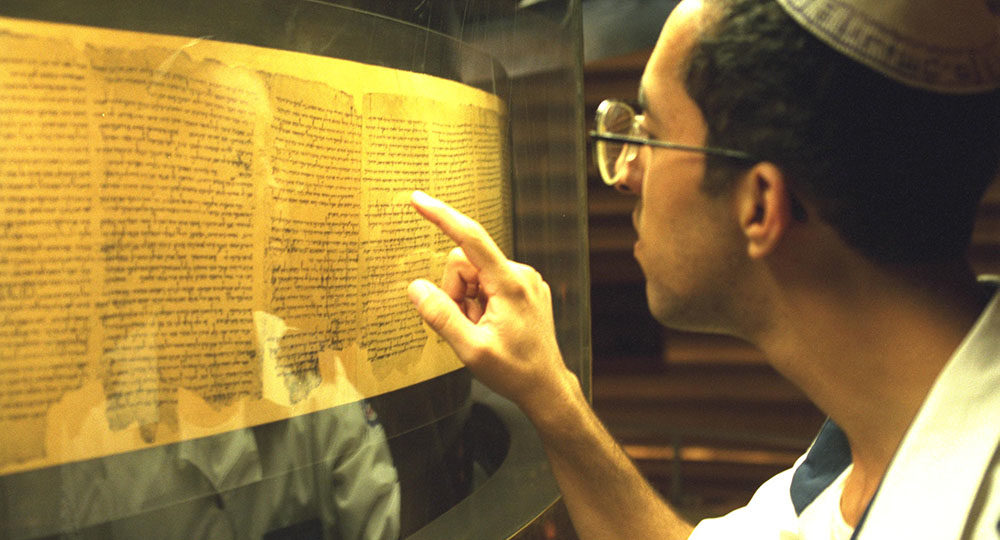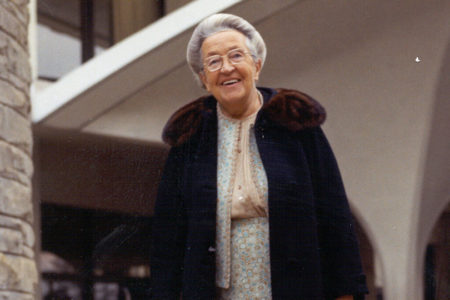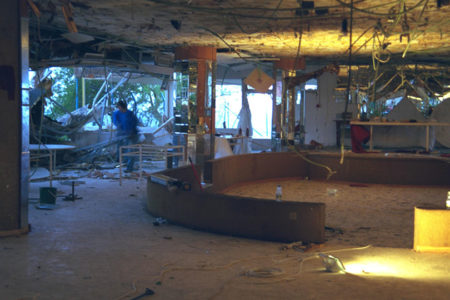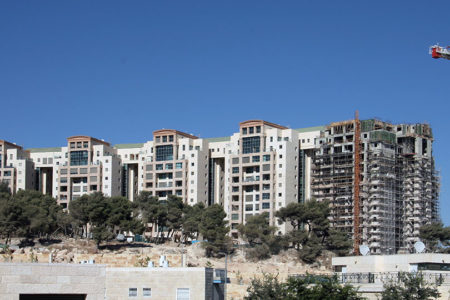The Politics of Sacred Space
Despite the fact that almost 2,000 years have passed since the second Temple last stood in its glory on the Temple Mount in Jerusalem, the politics of sacred space have not changed.
The Temple Mount and the city of Jerusalem, of which it is an inseparable part, remain at the center of the Middle East conflict. As in the past, internal religious disputes continue to disrupt the sacred site, while political rivalries have turned it into the most volatile 35 acres on earth.
Today enemies wage a war on history itself by denying that the Jewish Temples ever existed. Ironically, archaeology, the one science that could effectively refute such claims because it is apolitical and strictly academic, has, in the case of the Temple Mount, become the prey of political propaganda.
Yet the dominant influence is religious, and archaeological excavation on the Temple Mount for any purpose is forbidden both by Israel’s Chief Rabbinate and the Islamic Waqf, which administers the site.
It’s All About Religion
Although the international news media have perpetuated the notion that the current conflict is political (the Palestinian people’s right to “their land”) or national (the establishment of a Palestinian state), the real cause has always been religious.
In 1970 the Supreme Islamic Research Council stated, “The Palestine Question is not a national issue nor is it a political issue. It is first and foremost an Islamic question.” Furthermore, Article 15 of The Hamas Covenant states, “It is necessary to instill in the minds of the Muslim generations that the Palestinian problem is a religious problem, and should be dealt with on this basis.”
As Mortimer B. Zuckerman, editor-in-chief of U.S. News & World Report, observed, “For Hamas, nationalism exists only ‘as part and parcel of the religious faith.’” Shortly after Hamas took control of the government, one of its leaders, Mahmoud al-Zahar, openly declared that Sharia law (Islamic religious law) will soon rule in the Palestinian territories.
Hamas’s all-controlling Islamic agenda especially targets the Temple Mount. A picture of the Islamic Dome of the Rock, which occupies the site of the Jewish Temple, is at the center of Hamas’s logo. Surrounding it are the words There is no god but Allah and Muhammad is his prophet. Hamas wants to “liberate” the Masjid al-Aqsa, a term that refers to the entire platform containing the site’s religious structures.
It intends to remove all Jewish elements from the site and establish Islamic religious sovereignty. This goal is also inherent in the name of one of the leading terrorist groups responsible for dozens of shooting attacks and suicide bombings against Israeli civilians: the al-Aqsa Martyrs Brigades.
The name was chosen because the Palestinian Authority (PA) claims Israel plans to destroy the mosques on the Temple Mount and rebuild the Temple. The name symbolizes a resistance effort to defend Islam and its holy places. Even Christian-born Arabs, lured by Palestinian propaganda and indoctrinated in Replacement Theology in their churches and schools, have joined this Islamic terrorist organization.1
The Temple in Islam
Because the Islamic worldview recognizes the only relevant history of the region as that which began with Muhammad, any statement that a Jewish Temple once occupied the Haram (“noble enclosure,” an Islamic term for the site) is considered “provocation” to the Islamic mind.
The PA fabricated a revisionist history based on Islamic supercessionism that maintains that nothing other than Islam’s sacred structures have ever occupied the site. The present Palestinian mufti of Jerusalem, Sheik Ikrima Sabri, illustrated this core belief when he declared, “There is not the smallest indication of the existence of a Jewish Temple on this place in the past; in the whole city there is not even a single stone indicating Jewish history.”2
When I interviewed him in 1998, Sabri told me a Jewish Temple could never have been on the site, or Allah would never have permitted a mosque to be built there. He said the first mosque was built there by Adam and consecrated by Abraham and Ishmael, the progenitors of the Arab people and “worshipers of Allah.”
With this belief enshrined in sermons and inculcated throughout the Palestinian school system, it is not surprising a sincerely bewildered Palestinian merchant asked me (knowing I am an archaeologist) why the Jews were digging around the Haram: “What’s there that concerns them anyway?”
Explaining that the ancient remains surrounding the site are important for Jewish history only brought the further statement, “These are pre-Islamic, and nobody knows what they are!”
To minds that have been conditioned against critical thinking regarding their religion, no explanation is reasonable or welcome. This fact was made clear to me years ago when, after photographing stones in the retaining wall of the Temple Mount, an official of the Islamic Waqf asked what I was doing. When I said I was researching the past history of the site, he intoned, “You’d do better to forget the past and think about your future!”
Archaeology Ignites Conflict
Consequently, Muslims are hostile to Israeli archaeological pursuits of the history of the Jewish nation. They have rioted over excavations of a portion of the Herodian street along the southern end of the Western Wall and the opening of an exit to the subterranean Hasmonean Tunnel into the Muslim Quarter.
Such riots, which often spread into the territories and cost scores of lives, often mystify Westerners who suspect that Israel must have done something more serious to cause the Palestinians to respond so violently. However, as the recent international Muslim riots over an innocuous political cartoon reveal, violence in the name of religion does not require excessive provocation. For Palestinian Muslims—who insist Islamic law permits only Muslims to access the site and who know that archaeologists receive their permits from the Israel Antiquities Authority, an agency of the Israeli government—any penetration of the site is interpreted as the government’s veiled attempt to destroy the Islamic holy places and rebuild the Jewish Temple.3
In the Islamic world, there is no distinction between politics and religion. So even if this division exists in the Israeli world in which the Palestinian Muslims live, it is still an alien concept and unacceptable to the Muslim mind. Consequently, you might expect that the Israeli government would cease trying to placate Islamic religious sensibilities and exercise administrative control over the Temple Mount in order to properly excavate the site and prove to the Islamic world the Jewish claim to the city and the site. But it does not.
Why Doesn’t Israel Act?
People are often perplexed as to why successive Israeli administrations fail to deal decisively with the problem of the Temple Mount. In the past decade the situation has gone from bad to worse, with the Palestinian mufti usurping authority from the Jordanian mufti, moving his offices to the Temple Mount, closing the site to Jews, and destroying countless antiquities while constructing new mosques. Although many in the archaeological community protested, they received no support from the Israel Antiquities Authority or the Israeli government.4
What rationale could possibly justify this strange abandonment of what is universally regarded in Judaism as the heart and soul of the Jewish nation and the place where Israel’s final destiny will be realized?
One factor is Israel’s precarious relationship with the international community in light of Islamic terrorism and threats to the West, for which Israel is being blamed. In the past, attempts by Jewish groups to pray on the Temple Mount or hold demonstrations outside the walls of the Old City have resulted in violent Palestinian protests and brought swift condemnation from the UN for acts of “provocation.” The attempt to resolve the final status of Jerusalem at the Camp David II Summit brought mediated negotiations between Israel and the Palestinians to an abrupt halt when the issue of sovereignty over the Temple Mount was raised.
And following a visit to the Temple Mount in September 2000 by Ariel Sharon, then the leader of the Likud Party, and Arab members of the Knesset to investigate reports that the Islamic Waqf destroyed archaeological remains there, the PA staged a second intifada (“uprising”) and banned all Jews from the Temple Mount for the next three years until the Israeli government ended this unprecedented challenge to the status quo. This ban continues today with respect to the al-Aqsa Mosque, the Dome of the Rock, and other sensitive areas.
Another reason for Israel’s noninterference may stem from the fact that many Israeli authorities have already become resigned to the eventuality of a Palestinian state and the accompanying surrender of Israeli sovereignty over the Temple Mount. I recently observed this attitude when, as director of excavations at Qumran, I attended a reception in Jerusalem recognizing the country’s archaeological excavations. Failing to hear my own site mentioned, I asked an official why Qumran, so famous to Israeli history for the discovery of the Dead Sea Scrolls, was excluded. His curt reply was, “Qumran is on the map of the Palestinians.”
Qumran does lie in the area of biblical Judea known today as the West Bank; and it is true that in the provisional borders for Jericho, drawn with the Palestinians in 1994, part of the Dead Sea and two religious sites were to be included.
Yet the precise territory Israel was to concede was never specified. And certainly, the site of Qumran should be championed for archaeological and political purposes, since it continues to host one of the country’s most visited national parks and a popular tourist spot as well as a strategic military base and productive kibbutz (“collective farm”).
Nevertheless, the mere presumption of its inclusion on a proposed map for a future Palestinian state has been sufficient to exclude the site from even a mention at a reception for archaeologists in Israel.
Israel has also, in agreement with the West, staked its future on democracy and diplomacy. However, the nondemocratic countries with which Israel must “negotiate” do not recognize this policy nor respect this method. Islamic leaders are duty-bound to defend the honor of Allah and the “prophet” who subjugated the land of Israel in the seventh century and have never relinquished their claim to it.
To Hamas, this entire land is not only “Palestine” but “Islamic,” and jihad must be waged until it is liberated by the annihilation of the Jewish state. The Hamas Covenant mandates this stand:
The Islamic Resistance Movement believes that the land of Palestine is an Islamic Waqf consecrated for future Moslem generations until Judgement [sic] Day. It, or any part of it, should not be squandered; it, or any part of it, should not be given up. Neither a single Arab country nor all Arab countries, neither any king or president, nor all the kings and presidents, neither any organization nor all of them, be they Palestinian or Arab, possess the right to do that. Palestine is an Islamic Waqf land consecrated for Moslem generations until Judgement [sic] Day. This being so, who could claim to have the right to represent Moslem generations till Judgement [sic] Day?
This is the law governing the land of Palestine in the Islamic Sharia (law) and the same goes for any land the Moslems have conquered by force, because during the times of (Islamic) conquests, the Moslems consecrated these lands to Moslem generations till [sic] the Day of Judgement [sic].5
Consequently, it is understandable why the land most sacred to Islam—land containing the Islamic holy places administered by the Islamic Waqf—would never be negotiated and why Israel’s and the West’s continued attempts to do so are interpreted as a continuation of the Christian crusade against Islam, which had as its chief objective the removal of the Muslim presence from the holy sites in Jerusalem.
The politics of sacred space will continue to occupy center stage as the drama of the Middle East conflict continues to unfold. Ultimately, these events are part of the greater, divine drama that the biblical prophets foretold would climax with the coming of the Messiah to bring judgment to the nations and salvation to Israel (Zech. 12—14; Rom. 11:25–27; Rev. 19:11–17).
ENDNOTES
- Shlomo Mordechai, “Christian ‘Martyr’ for Islam,” Israel Today (June 2006): 10.
- Originally cited in an interview with the German newspaper Die Welt, January 17, 2001.
- Mary Curtis, “‘Bones and Stones’ War Puts a City in Trenches,” The New York Times, March 1996 (Culture section).
- For a complete study of this issue see “How Israel Lost the Temple Mount” in Randall Price’s The Battle for the Last Days Temple: Politics, Prophecy, and the Temple Mount (Eugene, OR: Harvest House, 2004), 157–78.
- “Hamas Covenant 1988,” Article 11, The Avalon Project at Yale Law School, <yale.edu/lawweb/avalon/mideast/hamas.htm>.






